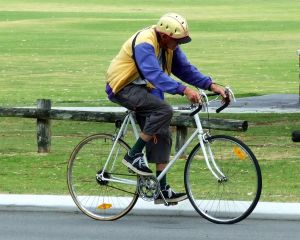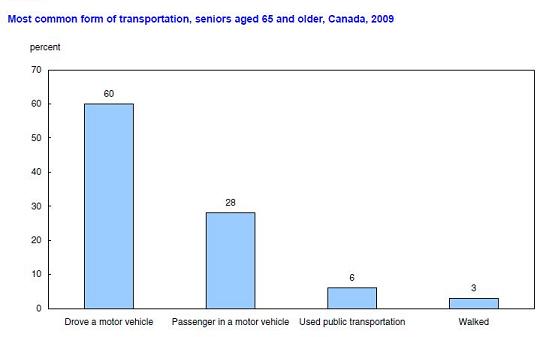 Manitoba’s population is aging. Regular walking and exercise is key to good health, especially as we get older. Unfortunately, too many neighbourhoods are built for driving not walking. A recent Statistics Canada report shows that seniors choose driving as their top mode of transportation.
Manitoba’s population is aging. Regular walking and exercise is key to good health, especially as we get older. Unfortunately, too many neighbourhoods are built for driving not walking. A recent Statistics Canada report shows that seniors choose driving as their top mode of transportation.
According to the survey, 60% of seniors picked driving as their most common mode of transportation, followed by 28% who were passengers in a car. Only 6% took the bus and 3% walked most often.
According to the data, one of the biggest factors that gets people to give up their car keys is poor health. Seniors who rated their health as excellent or good were 45% more likely to drive than those with fair or poor health. However, according to the World Health Organization, transportation choices are among the biggest social determinants of health. Active transportation options promote health in at least four key ways: they provide exercise, reduce traffic accidents, increase social contact and reduce air pollution.
It’s time we built communities that help everyone get around healthfully and safely without our cars. Green Action Centre put forward our vision in our submission to Winnipeg’s Transportation Master Plan consultations. You can read our full submission here, but the following guiding principles are a great start:
Guiding Principles:
- Adopt a plan that places pedestrians, cyclists and bus riders at the top of the transportation hierarchy,
- Accommodate the variety of road users through reduced lane widths rather than road widening.
- Acknowledge the limited carrying capacity of acceptable road widths by working to reduce the number of single occupant vehicles.
- Help residents switch some trips from driving alone to transit, walking, cycling and
- carpooling
- Ensure integration of the various modes to make it easy to combine walking, cycling, transit or driving for a given trip.
- Recognize and celebrate Winnipeg as a winter city with facility design and maintenance plans
- that accommodate four season use.
- Make education and communication a central part of all transportation projects and plans.
- Aim to provide separated facilities for users, e.g. pedestrians and cyclists, buses and cyclists.




Recent Comments